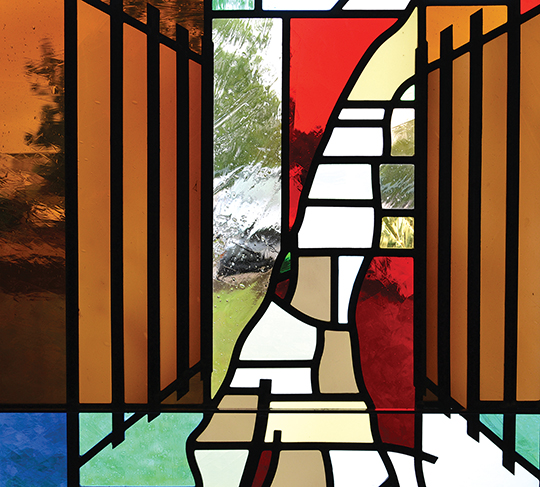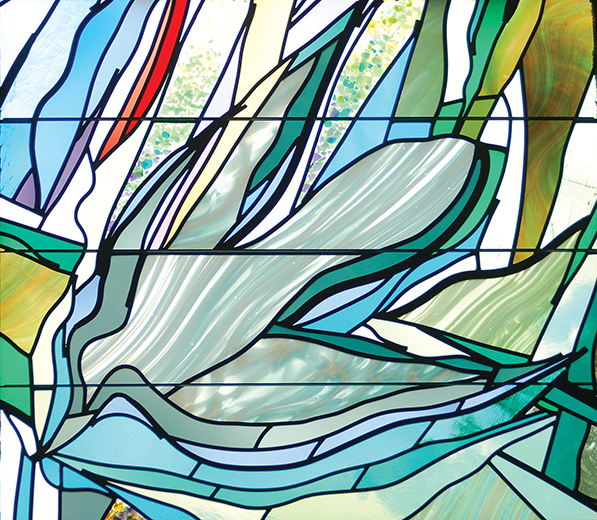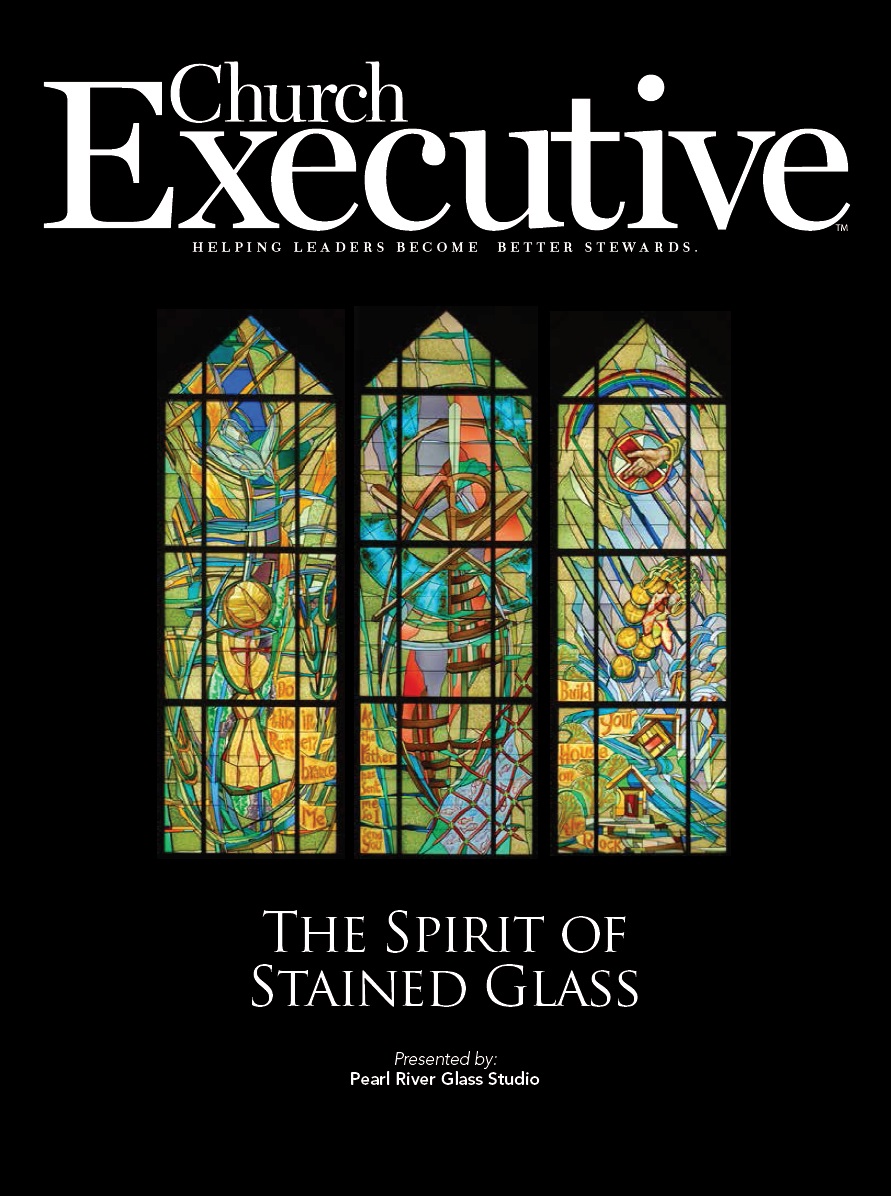
By Andrew Cary Young
The core elements of stained glass have remained unchanged for more than 1,000 years.
In their own era, our contemporaries designed, cut, leaded, delivered and installed the stained glass windows. Standing on the traditions of the past, the history and traditions of our specialized artistry inform the present. Artists are designers of composition and form; the form relays a symbolic message which we can understand, or which will pique our imaginations.
 A personal connection
A personal connection
Here are a few questions to ask when looking at a stained glass window:
Does the window manipulate color in a subtle way? It’s the finer subtleties that we perceive as artistic.
Do the forms of the design reinforce the theme of the window? The window should be seen as one integrated whole.
Does the window engage the viewer with the quality of light? The window should display the quality of glass transparency and shimmer.
Stained glass has the added dimension in the Christian church of creating image and form to share or evoke the Gospel story. The very nature of stained glass is to render a subject symbolically. The artistry is parallel to the theme of creation as God spelled it out to us in biblical terms. Stained glass should express creativity, as God was creative in the seven days at the beginning of our world. The expression of this creativity finds its way to us through the way the artist chooses form, theme, color, texture and all the design elements in his or her palette.
Stained glass windows allow God’s light to reach us. This light is made more meaningful to us by the manipulation of colors, symbols and stories. The window can be a threshold to the enlightenment we seek as we enter a church; it helps to make us more mindful of our own relationship to God.
The true spirit of stained glass
Christianity has continued to adapt to change over time — 2,000 years’ worth. Stained glass has done the same for half of that.
 In America, the great flowering of church construction paralleled the growth of the nation. From the late 1800s to the great depression, as towns grew, so did the number of churches in each community.
In America, the great flowering of church construction paralleled the growth of the nation. From the late 1800s to the great depression, as towns grew, so did the number of churches in each community.
After WWII, church construction was renewed as the baby boom generation needed Sunday schools, and their parents required a place to worship. Much stained glass was made during this time.
Many stained glass studios today thrive on the maintenance and restoration of these 100-year-old stained glass windows. In Europe — since the world wars — the preservation of this 1,000-year-old history has been stained glass studios’ primary livelihood.
Visual artists capture the essence of light in their compositions. There’s a photograph I keep on my desk, taken by my father and printed in his darkroom. It’s a photo of my mother in a graveyard bending down to read an inscription on a tombstone. The foreground is in shadow and silhouette of a wrought iron fence under the shade of a magnolia tree. She is in the sunlight in the middle ground, with a gray pattern of trees in the landscape beyond.
The true subject of the photograph is light and how it illuminates our world in patterns of light and dark. This is what the photographer captured at that moment in time. This image — as beautiful as it is, and as meaningful to me — is static and fixed. It will always look the same whenever I look at it.

This is what separates stained glass from all other artistic mediums.
When illuminated by natural sunlight, stained glass isn’t static; it changes in an instant. The nature of glass is to bend light. As the viewer moves about, his or her perspective is no longer a fixed point. Movement of the viewer changes the angle of refraction in all surfaces of the glass. The viewer moves, and the glass changes. It’s not the essence of light; it is light.
Glass — with the manipulation of light — captures the viewer’s imagination in the present moment. When we walk into a room of colored light, our imaginations are caught, and suspended for a time, by the beauty of the light in a myriad of color and transformations.
This is the spirit of stained glass.
Andrew Cary Young, president of Pearl River Glass Studio, Inc., in Jackson, MS, has dedicated his 40-year professional career to creating traditional leaded stained glass, as well as art glass, in service to the Christian Church.


